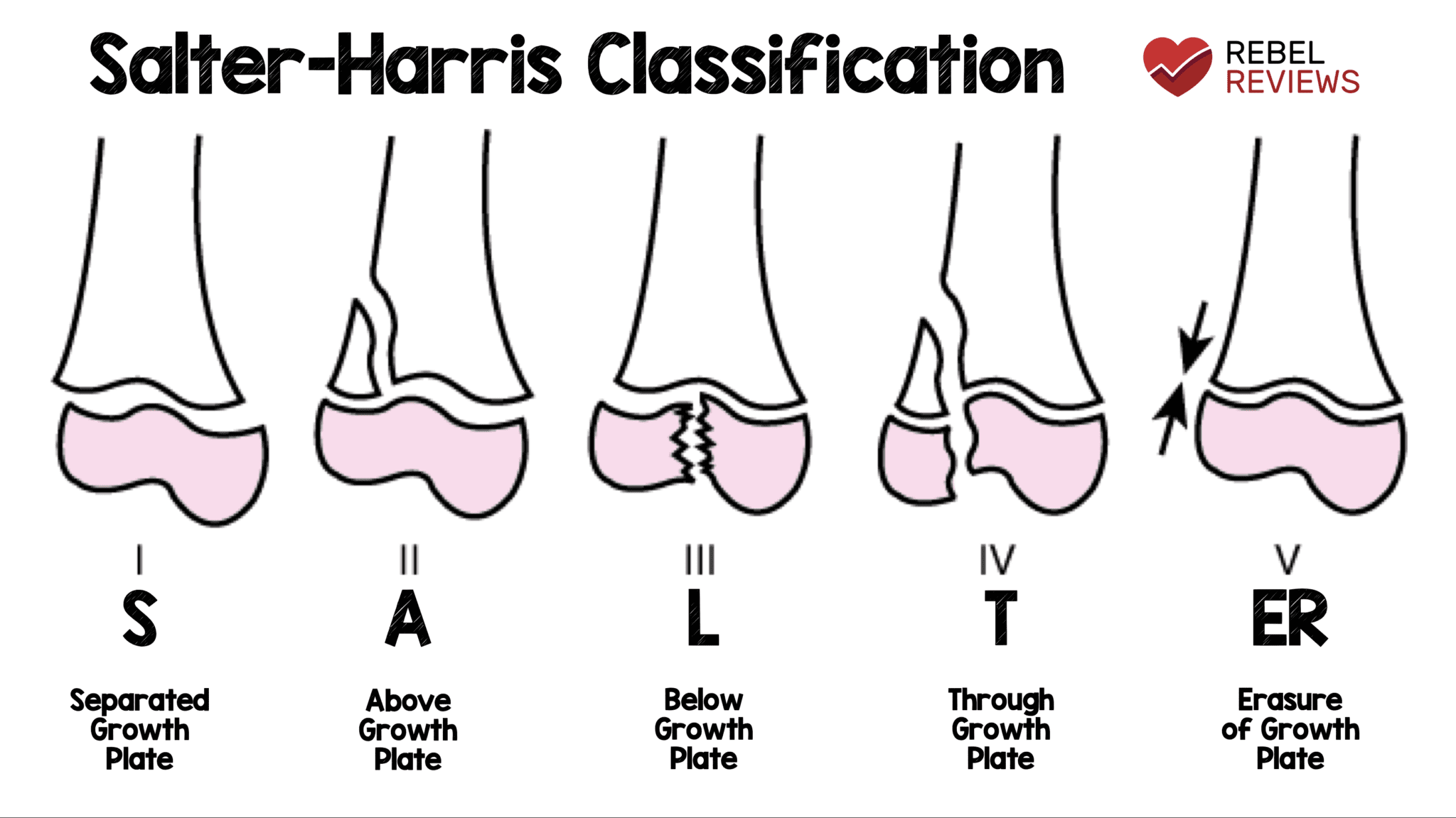
SalterHarris Fracture Classification REBEL EM Emergency Medicine Blog
SMACK S: slipped (type I) M: metaphyseal (type II) A: articular-epiphyseal (type III) C: complete-metaphysis and epiphysis (type IV) K: krushed! (type V) SMETI S: slipped (type I) M: metaphyseal (type II) E: epiphyseal (type III) T: through or transverse or together (type IV) I: impacted (type V) Quiz questions References Incoming Links

Salter Harris Physeal Injury Classification S GrepMed
Classification de Salter-Harris pour les fractures-décollement des disques ou plaques épiphysaires (cartilages de conjugaison) Les types I à IV sont des fractures épiphysaires; la plaque de croissance est séparée de la métaphyse. Le type II est le plus fréquent et le type V le moins fréquent.

harris salter fracture classification Google Search Orthopedic Nursing, Orthopedic Surgery
The Salter-Harris classification system can be used to categorize fractures involving the physis, or growth plate. There are 5 main types of Salter-Harris fractures: Type I, II, III, IV, and V. The different fractures can be remembered using the "SALTR" mnemonic. Type I (S) = Straight across physis. Type II (A) = Above the physis

SalterHarris Classification SalterHarris Fractures GrepMed
A Salter-Harris type I fracture refers to a fracture line that runs straight across the growth plate, involving the cartilage without affecting the bone. Type I may cause the epiphysis, or the rounded end of the bone, to separate from the rest of the bone.
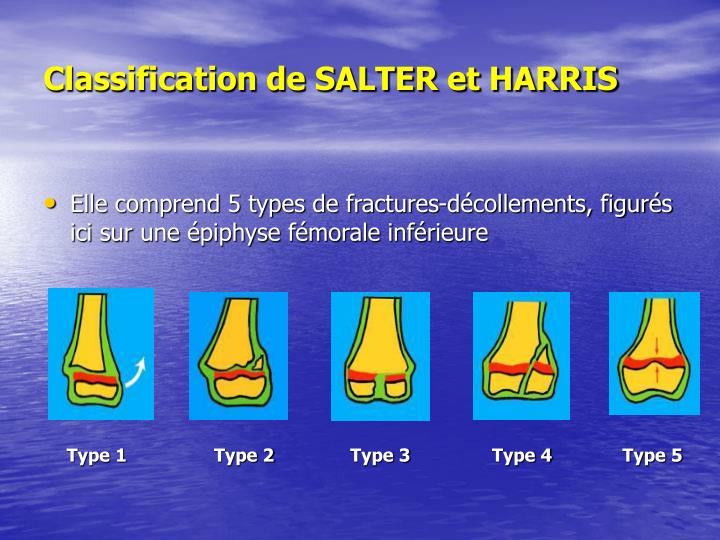
PPT Traumatologie Infantile PowerPoint Presentation ID549494
Salter-Harris classification. The most frequently used classification of physeal injuries is that of Salter and Harris [14], which describes five different types. It fails, however, to differentiate injuries to the zone of Ranvier at the periphery of the physis. These may be due to ligamentous avulsion or open abrasive trauma.

OurMedicalNotes SalterHarris Classification
The Salter-Harris classification system is used to grade fractures that occur in children which involve the growth plate ('physis') of a long bone (e.g. tibia or humerus). The classification is based on the involvement of the metaphysis, physis or epiphysis. Salter-Harris fractures are usually the result of a traumatic incident, like a fall.
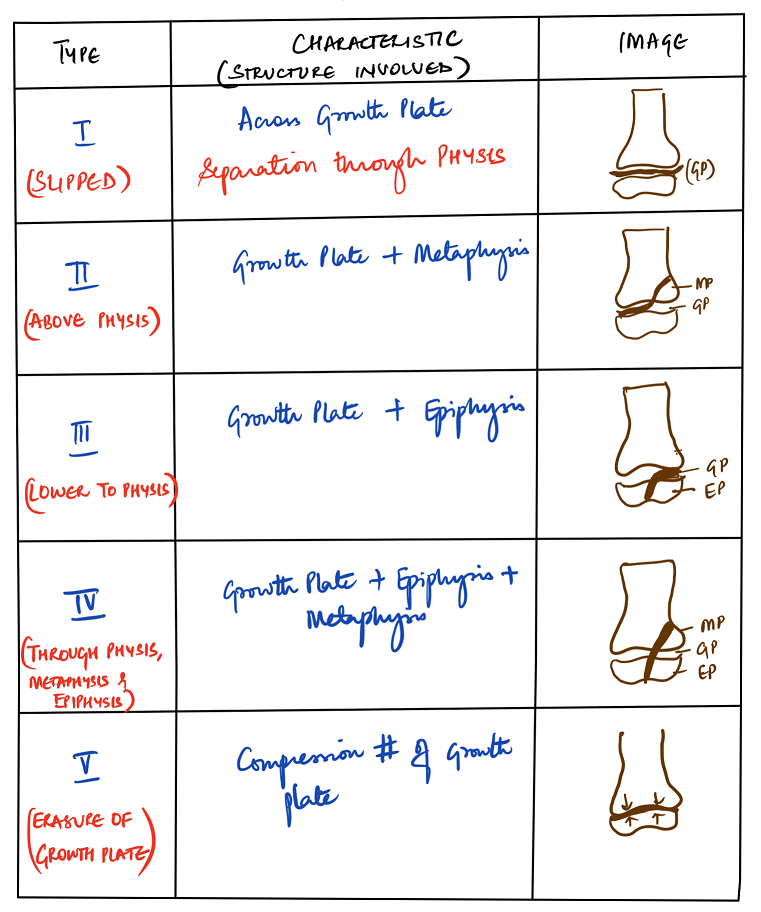
Medicowesome SalterHarris classification of fractures
A Salter-Harris fracture is a fracture that involves the epiphyseal plate (growth plate) of a bone, specifically the zone of provisional calcification. [2] It is thus a form of child bone fracture. It is a common injury found in children, occurring in 15% of childhood long bone fractures. [3]

SalterHarris Classification PT Master Guide
Salter-Harris fractures are injuries where a fracture of the metaphysis or epiphysis extends through the physis. Not all fractures that extend to the growth plate are Salter-Harris fractures. Radiographic features. Salter-Harris type I fractures describe a fracture that is completely contained within the physis. There is no associated bone.

Pin en Medicine
Injury Classification. Salter-Harris classification . Type 1: physeal separation. Type 2: fracture traverses physis and exits metaphysis. most common type. Thurston Holland fragment. Type 3: fracture traverses physis and exits epiphysis. Type 4: fracture passes through epiphysis, physis, metaphysis.

Salter Harris Classification Antrim ED Meducation
The five basic fracture types of the Salter-Harris classification are shown. A Type I fracture is a separation through the physis. A Type II fracture enters in the plane of the physis and exits through the metaphysis. The resulting metaphyseal fragment is called the Thurston-Holland fragment (*).

Fractures pédiatriques physaires (des plaques de croissance) Blessures; empoisonnement
Salter-Harris Classification. Salter-Harris Classification: Focused on injuries at the pressure epiphyses [Cepela, 2016]. There are two types of epiphyses - pressure and traction Pressure type provide longitudinal growth and bear weight.; Traction type provide appositional growth at origin/insertion of muscles and do not bear weight.; Describes 5 different types (although others have also.
salter harris types ALiEM
In a study of distal radius fractures, Cannata et al. found that the rate of physeal arrest at the distal radius was less than 30% while the rate of physeal arrest at the distal ulna approached 80%, however, neither was significantly correlated to Salter-Harris classification and fewer than 5% of patients had residual symptoms or functional.
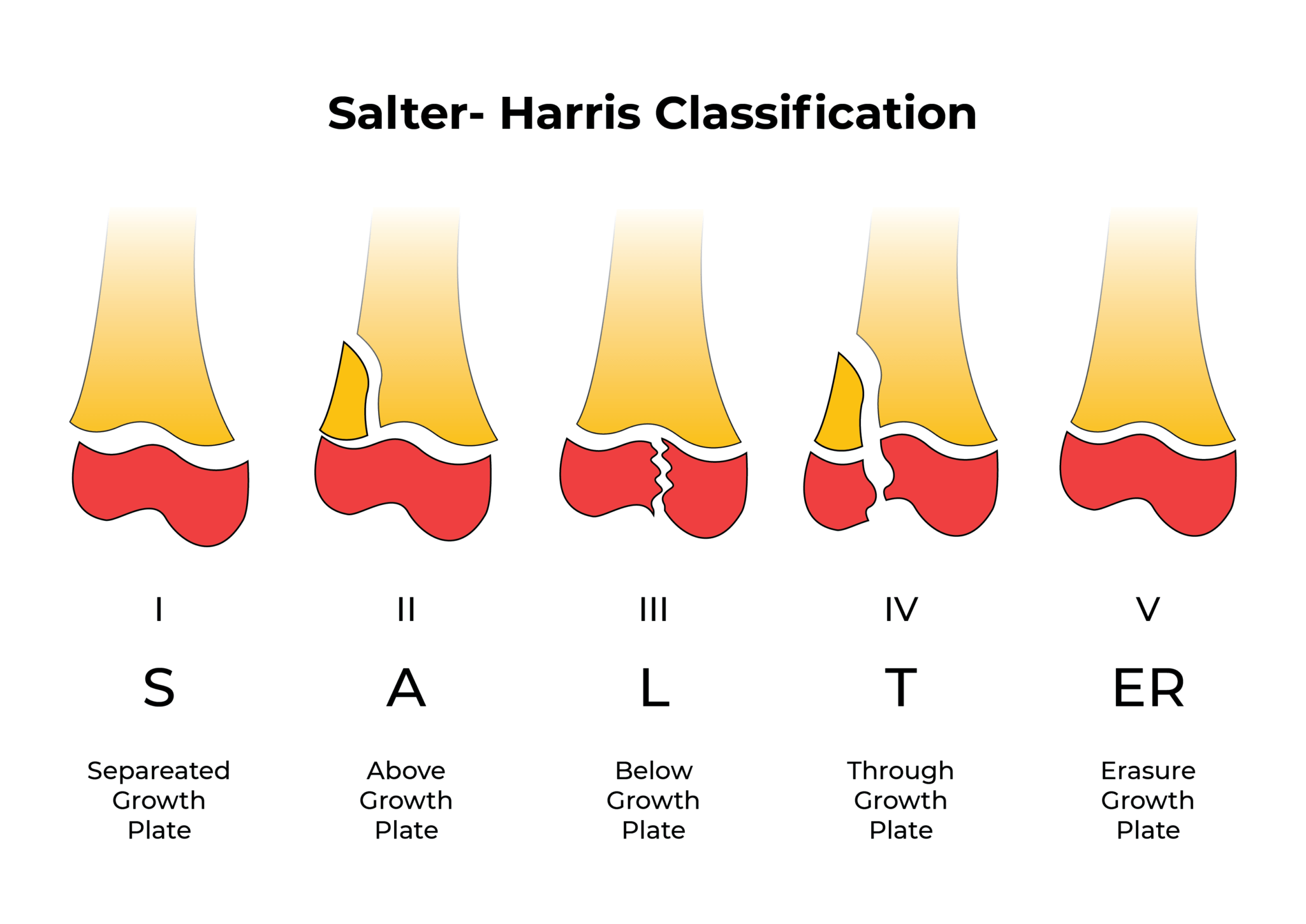
Wrist Examination & Pathology Module
The Salter-Harris classification was proposed by Salter and Harris in 1963 1 and, at the time of writing (January 2023) remains the most widely used system for describing physeal fractures . Classification Conveniently the Salter-Harris types can be remembered by the mnemonic SALTR. type I s lipped 5-7%

CME 27/11/14 Paediatric Fractures Charlie's ED
Growth plate injuries: Salter-Harris classification. Physeal fractures of the distal radius and ulna: long-term prognosis. Salter-Harris fractures (physeal fractures) refer to fractures through a growth plate (physis) and are, therefore, specifically applied to bone fractures in children.

PEDIATRIC EPIPHISIAL FRACTURE (SALTERHARRIS) CLASSIFICATION Imagenes de medicos, Radiología
Salter-Harris Classification. The most common physeal ankle fracture is the Salter-Harris Type II (SH-II), which account for 32-40% of pediatric distal tibial fractures, then followed by SH-III (25%), SH-IV (up to 25%), SH-I (3-15%) and SH-V (less than 1%). 8, 38 The prognosis of SH-I and SH-II is the best, followed by SH-III then SH-IV.
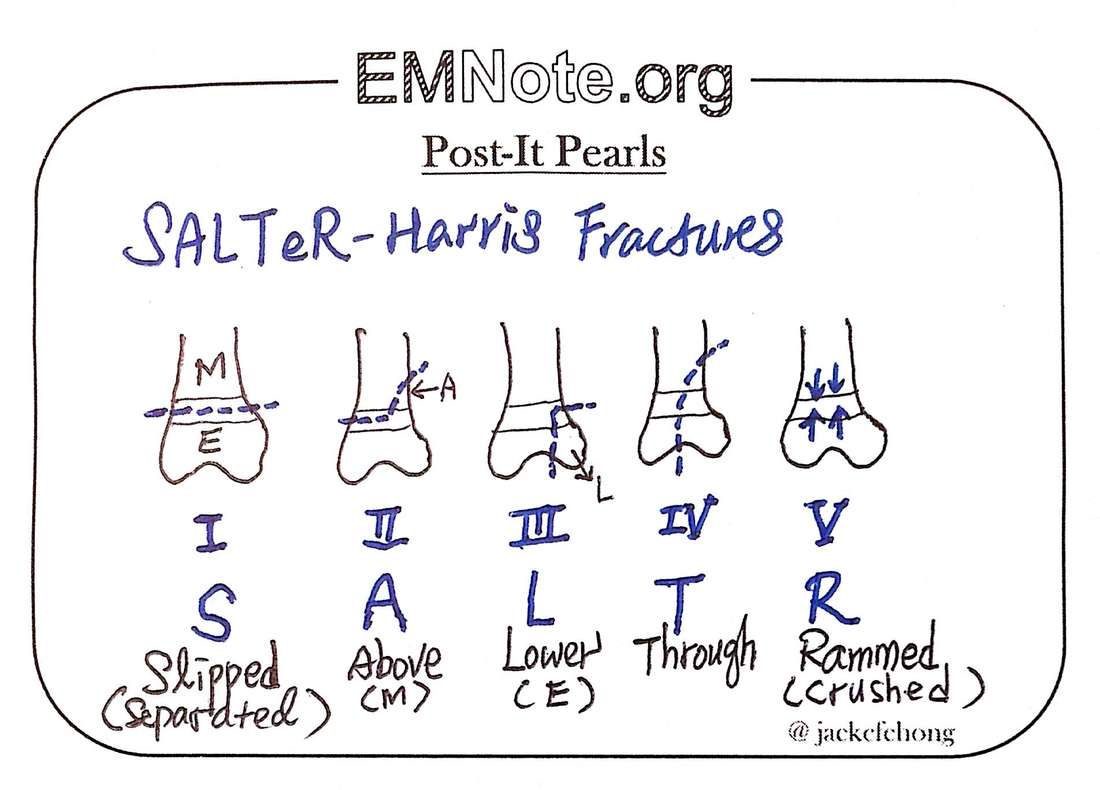
EMNote
Salter-Harris classification of physeal disk (growth plate) fractures Types I through IV are physeal separations; the growth plate is separated from the metaphysis. Type II is the most common, and type V is the least common.